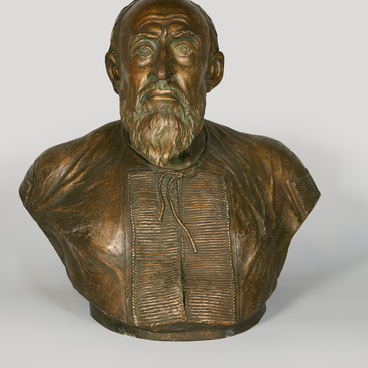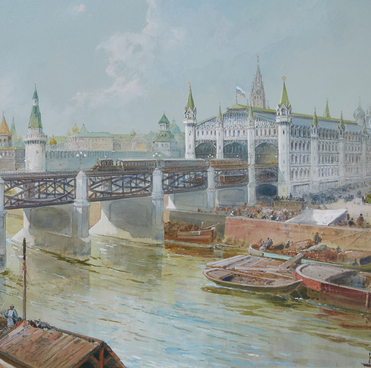In 1963, a group of scientists and employees of the Moscow Kremlin museums examined the tombs of the sovereigns in the Archangel Cathedral. In one of the sarcophagi belonging to the son of Ivan the Terrible, Tsarevich Ivan Ivanovich, fragments of his clothes and burial shroud were found. The fabrics found in the tombs were processed in the workshop of the Armory by the restorers M.G. Baklanova, N.F. Ivanova and T.N. Koshlyakova. In 1966, one of the fragments of the cover was transferred by V.I. Markova to the funds of the Museum of Moscow (then the Museum of History and Reconstruction of Moscow).
In 2010, the fabrics classified as shrouds (veils) were re-examined. It turned out that the fabric used at the burial of Tsarevich Ivan Ivanovich is similar in pattern to the fabric of the shroud from the sarcophagus of Tsar Ivan the Terrible. Technological tests of this fabric showed that its characteristics are also similar to the ones of the fabric of Ivan the Terrible’s shroud. The fabric pattern is constructed from oval medallions with pomegranate flowers decorated with ribbons with a scaly design. A floral pattern is featured between the medallions. The dyes in the fabrics have been practically lost. Microscopic traces of the natural blue vat indigo dye were detected in the blueish‑green warp threads along the edge. Additionally, the main threads of a reddish color were also observed on a small area. Perhaps there were red stripes along the edge between the blueish-green ones.
The opinion of Irina Elkina regarding the significance of such finds that she expressed in her work “Textiles of Moscow Russia of the 16th–17th centuries According to Archaeological Data: Attribution, Technology, Reconstruction” is rather curious,


